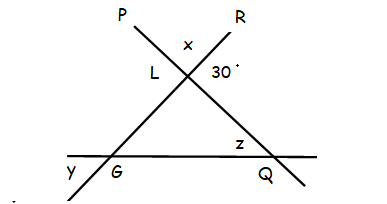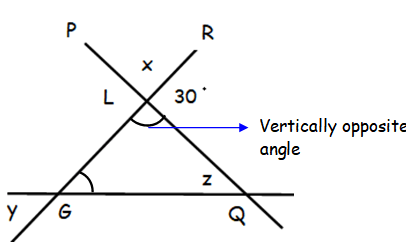PSAT MATH QUESTIONS AND ANSWERS
Subscribe to our ▶️ YouTube channel 🔴 for the latest videos, updates, and tips.
Question 1 :
Convert 7/20 to decimal form.
Solution :
In order to find the decimal form of the given fraction, we have to convert the denominator as 10, 100, 1000, etc.
Now we have 20 in the denominator, in order to convert it as 100, we have to multiply both numerator and denominator by 5.
So, we get
= (7/20) ⋅ (5/5)
= 35/100
= 0.35
Hence the decimal form of 7/20 is 0.35.
Question 2 :
Find the value of 500, 000 + 400 + 5.
Solution :
By adding 400 and 5, we get 405. So we have to change the last three digits of 500, 000.
So, we get 500405.
Question 3 :
If x = 4 and y = 3, what is (x + y)2 ?
Solution :
In order to find the value of (x + y)2, first we have to find the value of x + y.
x + y = 4 + 3 = 7
(x + y)2 = 72 = 49
Question 4 :
(√144)(√16)
Solution :
√144 = √(12 ⋅ 12) = 12
√16 = √(4 ⋅ 4) = 4
(√144) (√16) = 12 ⋅ 4 = 48
Hence the answer is 48.
Question 5 :
1 knot = 3 vines
2 shings = 4 knots
How many Shings are in 9 Vines ?
Solution :
Given that :
1 knot = 3 vines ---(1)
4 knots = 2 shings
1 knot = (1/2) shings ----(2)
(1) = (2)
3 vines = (1/2) shings
By multiplying 3 on both sides, we get
9 vines = (3/2) shings
Hence the answer is 3/2 shings.
Question 6 :
What numbers is half way between 2 ⋅ (3/6) and 4?
Solution :
First let us simplify
2 ⋅ (3/6) = 1
The number between 1 and 4 are 2 and 3.
To find the half way, we have to find the average of 2 and 3.
= (2 + 3)/2 = 2.5
Hence the answer is 2.5.
Question 7 :
In the figure given below LGQ is a triangle. What is z in terms of y?

Solution :

∠PLR + ∠RLQ = 180°
x + 30° = 180°
x = 180° - 30° = 150°
∠RGQ = y.
x + y + z = 180°
150° + y + z = 180°
z = 180° - 150° - y
z = 30° - y
Hence, the required angle is 30° - y.
Question 8 :
-2 + 5(-18 ÷ 3 + 9) - 13
Solution :
By using PEMDAS rule, first we have to simplify the terms inside the parenthesis.
= -2 + 5(-18 ÷ 3 + 9) - 13
In the parenthesis, we have to perform division.
= -2 + 5(-6 + 9) - 13
= -2 + 5(3) - 13
Then we have to perform multiplication.
= -2 + 15 - 13
= -15 + 15
= 0
Question 9 :
The are of a square is equal to the area of circle, whose diameter is 10. What is the length of a side of the square ?
Solution :
Area of square = Area of circle
a2 = π r2
Diameter of the circle = 10
Radius of circle = 10/2 = 5
a2 = π (5)2
a2 = 25 π
a = √(25π)
a = 5√π
Hence the side length of square is 5√π.
Question 10 :
4a(3b - 6)
Solution :
We have to distribute 4a with the terms inside the parenthesis.
= 4a(3b - 6)
= 12ab - 24a
PSAT Math Worksheets
Hardest PSAT Math Questions with Answers
Study Material for SAT Math
Hardest SAT Math Questions with Answers
Subscribe to our ▶️ YouTube channel 🔴 for the latest videos, updates, and tips.
Kindly mail your feedback to v4formath@gmail.com
We always appreciate your feedback.
About Us | Contact Us | Privacy Policy
©All rights reserved. onlinemath4all.com
Recent Articles
-
US Common Core K-12 Curriculum Algebra Solving Systems of Equations
Dec 20, 25 12:12 AM
US Common Core K-12 Curriculum - Algebra : Solving Systems of Equations (Grade - 8) -
10 Hard SAT Math Questions (Part - 40)
Dec 18, 25 06:27 PM
10 Hard SAT Math Questions (Part - 40) -
Digital SAT Math Problems and Solutions (Part - 13)
Dec 18, 25 12:26 PM
Digital SAT Math Problems and Solutions (Part - 13)
